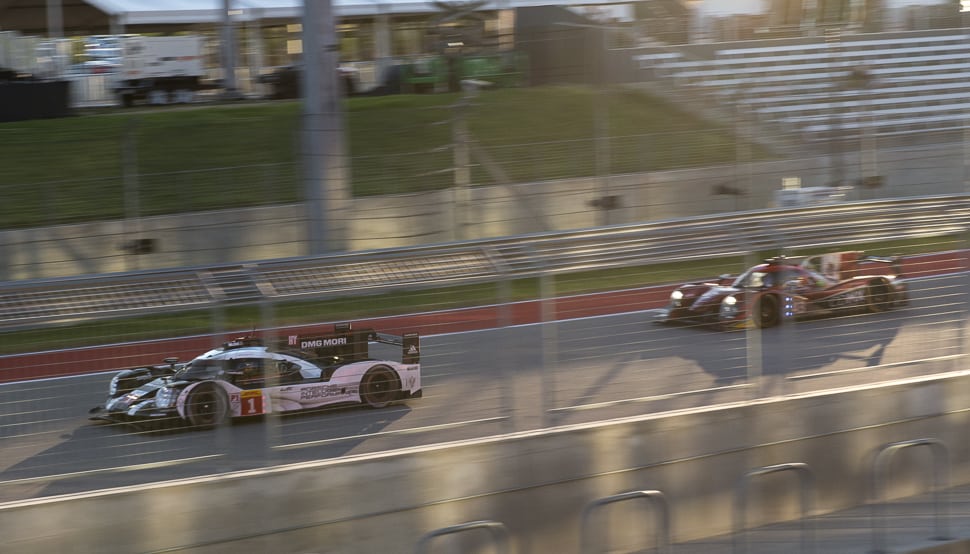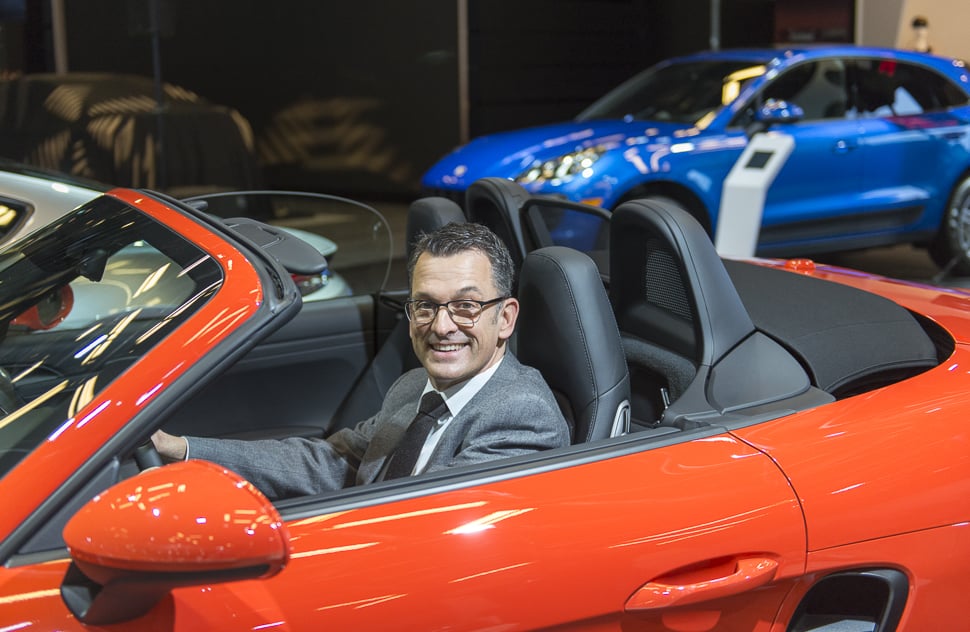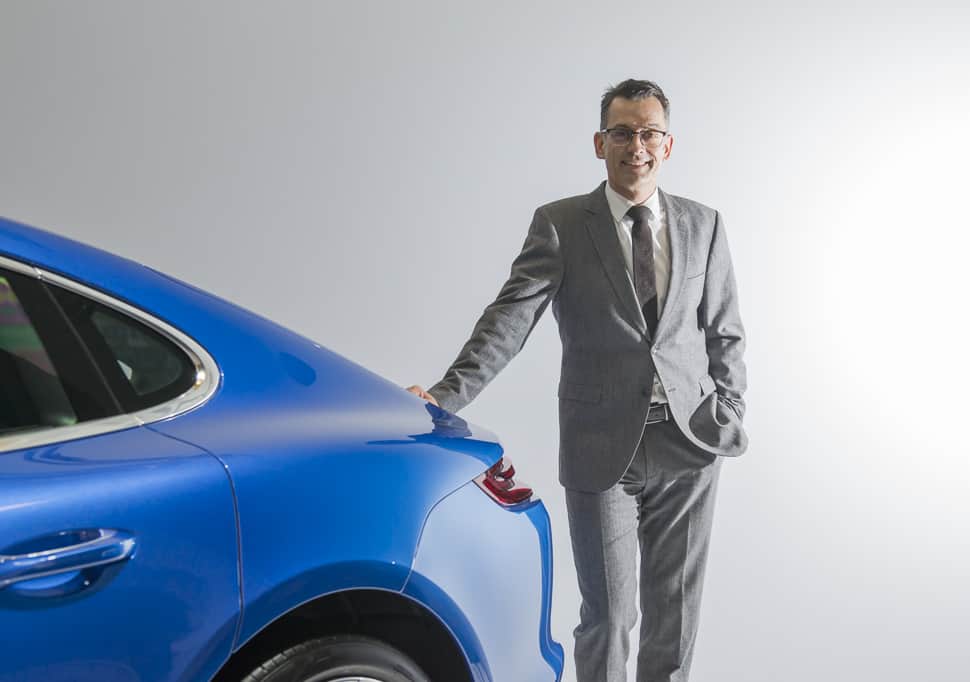Q: How did sales stack up in 2016? Which models were the clear winners? And any predictions for next year and beyond?
2016 was an unprecedented business year for Porsche Cars Canada. We achieved our best annual sales record to date with over 7,000 units – 7,061 new vehicles to be exact. This represents a 10% growth year-over-year. Our top three model lines were the Macan, Cayenne, and the iconic 911. We also posted new records in the pre-owned and parts business areas. Although we are unable to discuss our future sales targets or plans, we do expect this momentum to continue into 2017. In fact, we have already achieved our previous 2018 sales goal of 7,000+ units in 2016, meaning we have laid a solid foundation for our plans and Strategy 2025 – an exercise we just completed that helps us plan into the future to ensure we have a clear path to continuing the success story of the brand in Canada.
Q: With cars like the Cayenne S E-Hybrid, new Panamera S E-Hybrid and of course the 918 Spyder, it looks like Porsche is preparing for an electric future. Can you talk a bit about this?
It is true that we are fully committed to a future embracing e-mobility and e-performance. Porsche was the first manufacturer to offer three Plug-In Hybrid Electric Vehicles in their line-up: the Panamera S E-Hybrid, the Cayenne S E-Hybrid, and the 918 Spyder. The all-new Panamera 4 E-Hybrid boasts 462 horsepower, offers all-wheel drive and an electric range of 50 kilometres. This proves how we are not satisfied with merely boosting efficiency when we can take performance and driving pleasure to the limits at the same time.

Q: How has the Canadian market specifically responded to Porsche’s hybrid lineup thus far?
Year-over-year sales indicate that the Canadian market is responding very well to our e-Hybrid portfolio. For example, our December 2016 year-to-date sales of Cayenne and Panamera S E-Hybrid specific units of 378 marks 48% growth over 2015 (256 units).
Q: What does the future of mobility look like at Porsche?
By the end of the decade, Porsche will bring the brand’s first purely battery-powered sports car to the market – with “Mission E”, a vehicle based on the concept shown at the Frankfurt Auto Show in 2015. Porsche does not simply build electric cars. We build sports cars in a new era of mobility that drive like a Porsche, look like a Porsche and feel like a Porsche. The “Mission E” will be the sportiest and most technologically advanced vehicle in its segment. It will be able to accelerate and brake repeatedly without loss of performance, with a range of over 500 kilometres in the New European Driving Cycle (NEDC). The charging time will be very short: via its 800-volt port, it will take just over 15 minutes to achieve a range of 400 kilometres when using a DC Fast Charger.
Q: Porsche has obviously been a performance-first manufacturer since its early days. Do you see this trend potentially changing as new means of propulsion (i.e. electricity) are adopted?
At Porsche, this new type of “E-Performance” – more power, more driving fun, more efficiency – is seen as the performance kit of the future. In no way do we plan to veer away from our core strength of being a sports car company, even with embracing electricity into the future. We will harness our innovative technologies in ways that further elevate that characteristic and bring light to all new levels of Porsche performance. We will continue to do this in the same way that the 919 Hybrid has captured and successfully defended the 2015 and 2016 World Endurance Championship manufacturer and driver titles using technology that is laying the foundation of our performance-minded hybrid technologies.

Q: There has been a lot of hype in the industry over autonomous driving. What is your personal opinion on the subject?
I believe that, even in the future, people are still going to want to drive a Porsche themselves. However, I’d have to say that if I am sitting in traffic in the morning on my way to work, I would find it a huge benefit being able to use that time reading early morning emails and leave the car to drive itself autonomously. Similarly, it would be great if my car could give me an overview of what’s in my schedule for the day. Or, if I want to go to a restaurant in the evening and can’t find a parking space, the car would find one autonomously and park itself. When exactly this all is going to materialize, nobody can predict for sure, but I believe that it is eventually going to become reality.
Q: Is there any news regarding work on autonomous driving technology at Porsche?
Porsche already has multiple features in today’s cars that help the driver to better cope with challenging traffic situations, such as lane departure warning and adaptive cruise control with Porsche Active Safe (PAS). Going forward, we are working on expanding the portfolio of functions towards autonomous driving. However, our vehicles will always have a steering wheel and offer the driver the option of taking control. We will also continue to make vehicles with a manual transmission. The intention is for customers to be able to decide for themselves what they want to have in their car. Some drivers like minimalist cars, others value assistance systems.

Q: Now that we’ve spoken a bit about the future, what about classic Porsche vehicles still seen on roads today? To say they’ve kept their value is an understatement. What do you attribute to their remarkable jump in prices in recent years?
There are a few factors in place in my opinion. Porsche’s are known to be durable and built for enthusiastic driving. With an estimated 70 per cent of all Porsche vehicles ever produced still on the road today we have a strong track record of building vehicles that last. They possess a beautiful design that many people consider timeless. A large number of passionate Porsche Owners thoroughly enjoy their vehicle so much that they take great care of preserving it. Some of this also has to do with a clear collector market at play causing the demand for classic vehicles to rise. In 2016 we opened our first Certified Porsche Classic Partner at Porsche Centre Victoria. This is the fourth of its kind in North America. This gives us the opportunity to help maintain classic models and owner enthusiasm. Certified Porsche Classic Partners provide owners of Porsche models older than 10 years genuine parts, service and Classic car sales.
Q: What do you consider your biggest accomplishment during your time working at Porsche Cars Canada?
Since I joined Porsche Cars Canada as President & CEO in September 2013, sales have more than doubled, from 3,003 units in 2012 to 7,061 last year. For me, this is the result of a combination of factors: First and foremost, outstanding vehicles within the entire model line-up, a great and respected brand that attracts many customers, a highly professional and passionate dealer network, as well as a highly motivated and enthusiastic team here at Porsche Cars Canada. Personally, an accomplishment that stands out has been the development and implementation of our internal Strategy 2018 back in late 2013/early 2014. The strategy opened a path for future growth, and helped to convince both the dealers and the team that this, at the time very ambitious plan, is indeed worth pursuing with optimism and energy. Also, empowering staff and safeguarding continuous and valuable buy-in from the North American region and Porsche AG brings me great pleasure on a day-to-day basis.
Q: Just for fun, what’s the first Porsche you ever drove, and what was most memorable about the experience? What do you drive now? And finally, what are the biggest similarities and differences you’ve noticed between the two?
The first Porsche I drove was a MY 2001 911 Carrera 4 Coupe (996 generation) in Speed Yellow when I started at Porsche AG back in July 2001. The colleague from the fleet department who handed the keys to me advised that I should keep the windows closed; otherwise people might mistake the vehicle for a postal box – because in Germany all postal boxes are painted bright yellow. While I didn’t find any letters in the car, it certainly made an instant impression on me and turned many heads. Currently, I am driving a black MY 2017 Cayenne S which I am enjoying a lot. While both vehicles are of course somewhat different in terms of size, trim, technology, and of course colour, there is one major similarity between both: Even though 16 model years separate the two, they both look and drive like a Porsche.



